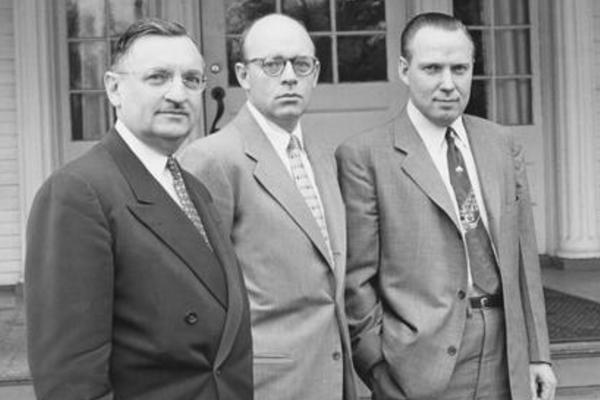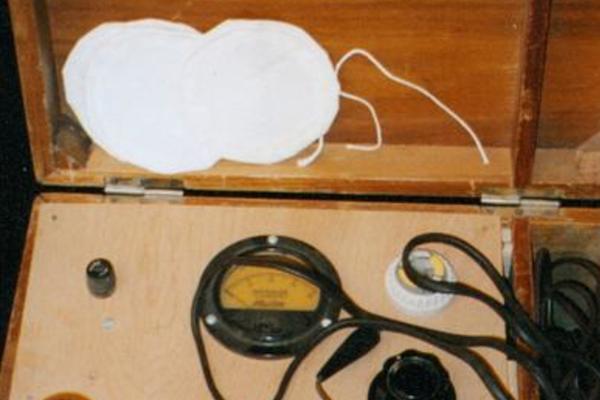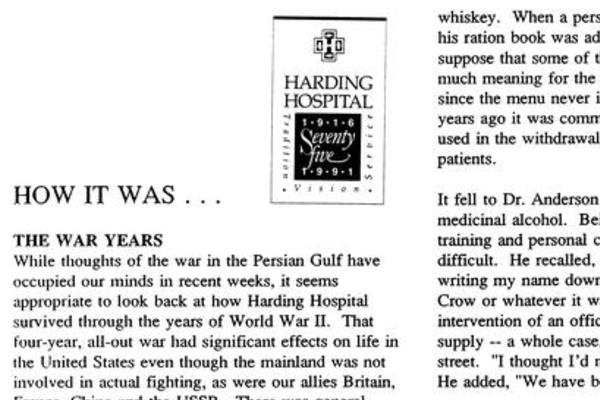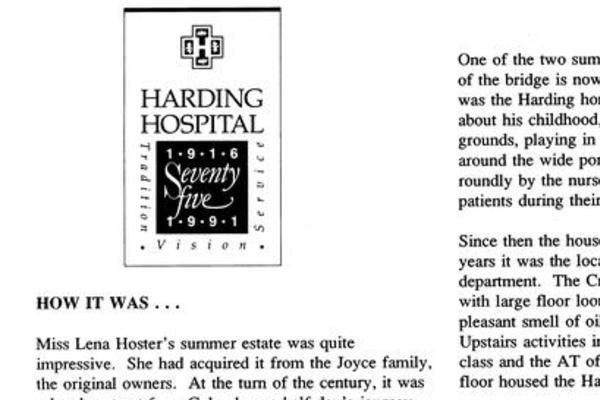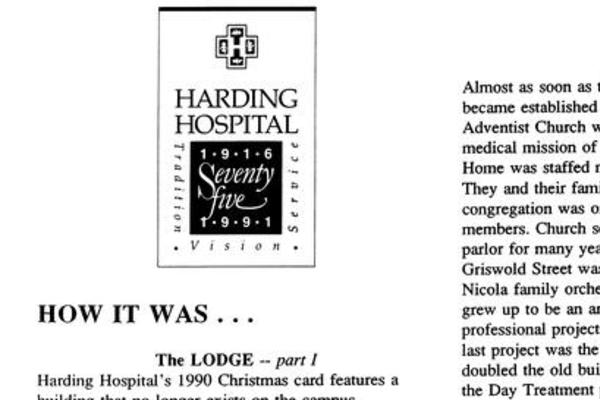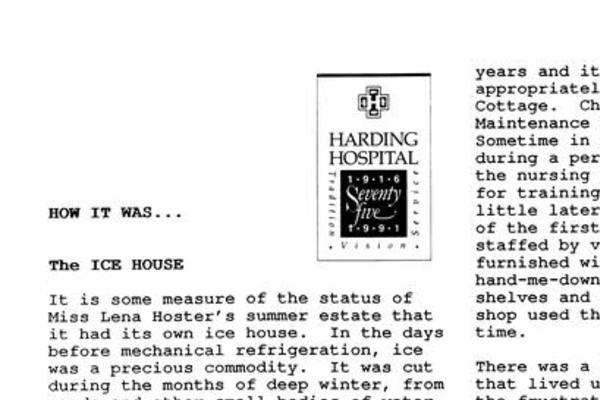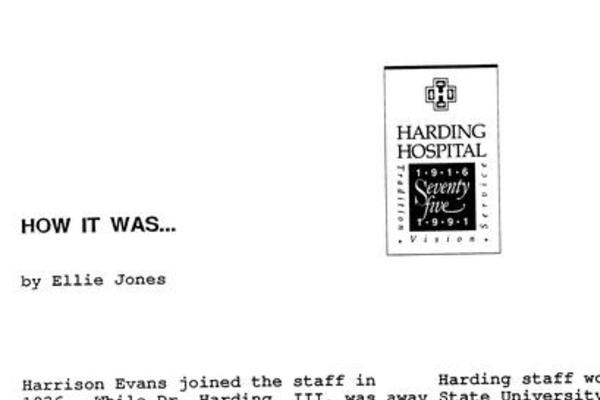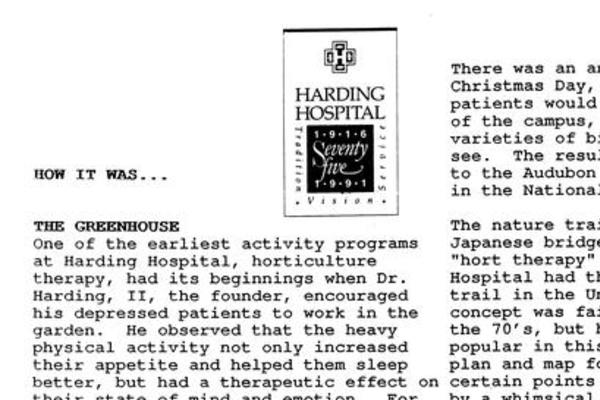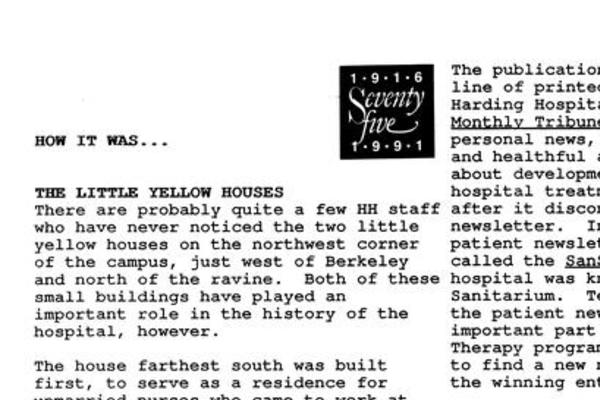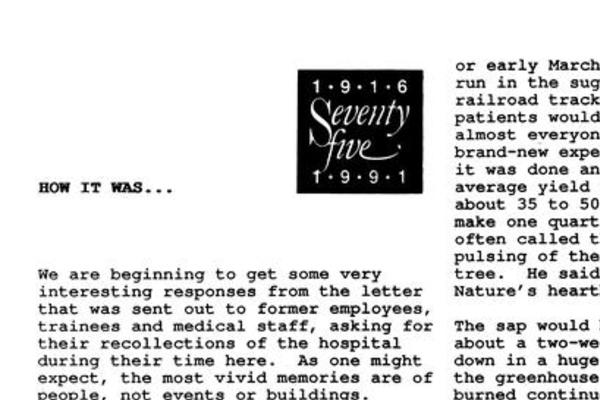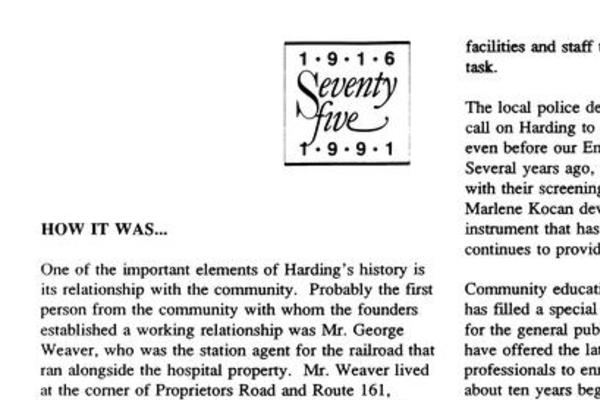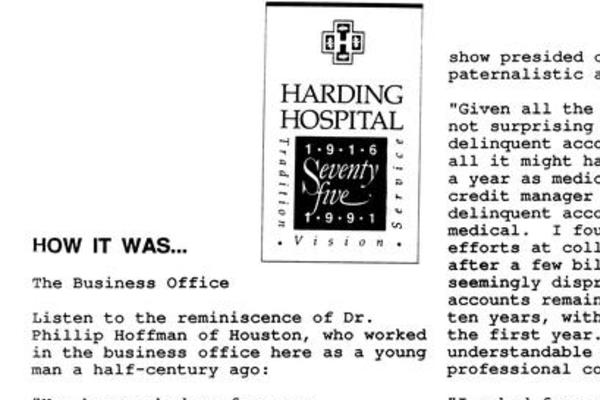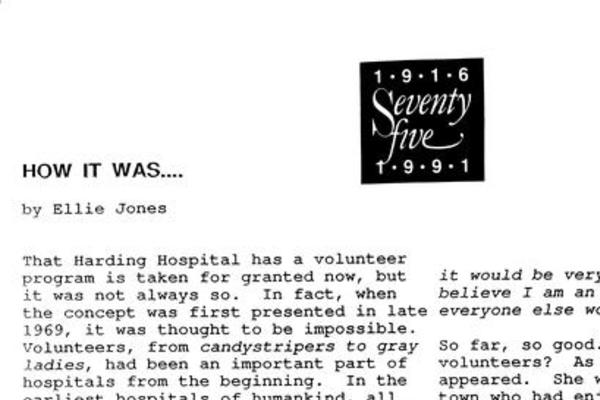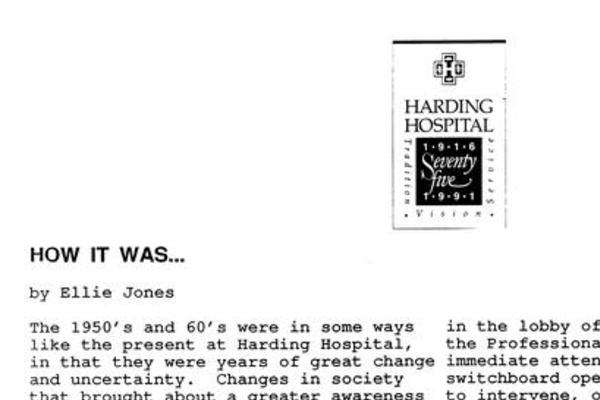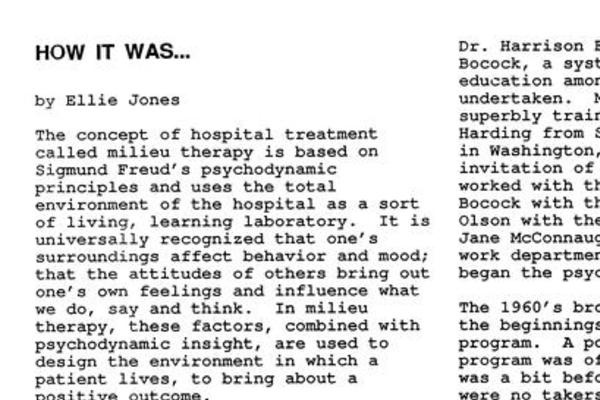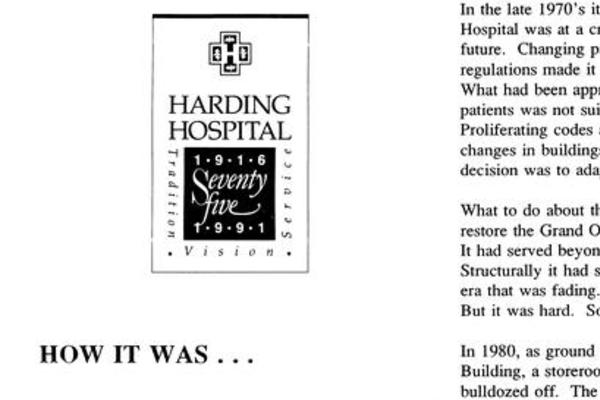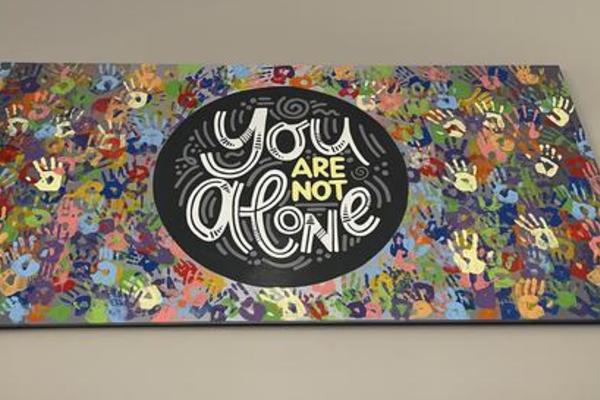Monday,
May 1, 2023
11:46am
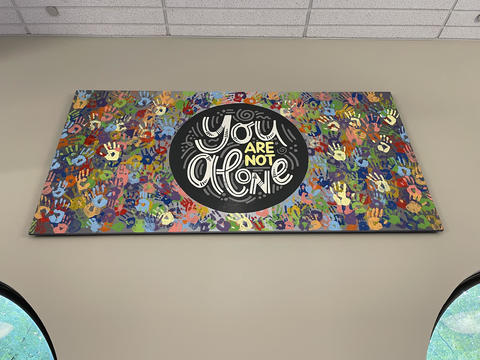
May is Mental Health Awareness Month, a national movement established in 1949 to promote wellness by increasing awareness about the importance of mental health and fighting the stigma surrounding it. Worthington has a long history of interacting with the mental health landscape, which we will look at for our May exhibit.
Perhaps most famously, Harding Hospital entwined Worthington with mental health treatment. Originally opened in 1916 in Columbus as the Indianola Rest Home, the center moved south of Columbus, where it was renamed the Columbus Rural Rest Home, before moving to Worthington in 1919. Dr. George T. Harding II, younger brother of U.S. president Warren G. Harding, established the facility alongside others affiliated with the Seventh-day Adventist Church. Harding's son, George T. Harding III, took the reins of the hospital following his father's death, renaming it Harding Sanitarium. Under Harding III, the hospital expanded services, providing treatment for mental illness and training in the field of psychiatry. The hospital was intended as a refuge for those experiencing difficulties and a range of methods was used to treat patients.
A series of "How it Was" newsletter articles shared details and anecdotes about Harding Hospital. The treatment center practiced milieu therapy beginning in the 1940s, seeking to design a patient's surroundings to affect change in them. The immersive therapy could affect the hospital, and even family, environment, as loved ones were sometimes instructed to make changes to support the hospital's vision for patient recovery. Some therapies also included an emphasis on activities such as gardening. Horticultural therapy was used in some cases, as clinicians saw improvement in patients' appetite, sleep and well-being in some cases as they participated in these activities. Electroconvulsive therapy (ECT) was another practice undertaken by the hospital. ECT, especially during the early years of its use, is controversial. The treatment administered mild electric shocks to patients who were not responding to depression medications. While safer than some therapies used in previous decades, the treatment, particularly during its early development, could have harsh side effects.
The hospital became a part of The Ohio State University’s Wexner Center in 1999, moving its location to the OSU campus in Columbus.
The 1960s saw a trend toward deinstitutionalization in mental health care across the country, as patient advocacy became more common and more treatments began to focus on community-based care, rather than extended stays in mental health facilities. In 1961, the Franklin County Mental Health Association organized a mental health committee in Worthington and the group's first project centered around lifting the spirits of Columbus State Hospital patients by organizing the purchase of Christmas gifts. The Worthington Community Counseling Services was another organization supporting mental health around this time period. Initially focused on service to young adults, the agency began with activities, such as a camping program, that gave participants the opportunity to build confidence and trust. In the 1970s, the organization expanded its focus, evaluating the community's mental health needs through a survey that gauged residents' concerns about domestic problems and substance abuse.
Mental health was in the forefront of many people's minds, not just in Worthington, but worldwide, in 2020. The early days of the COVID-19 pandemic spurred anxieties and mental health concerns as people isolated themselves to control the spread of the virus. A trying time for many, organizations and individuals worked to ease the difficulties the community faced both during the initial period of stay-at-home orders and later, when people began to re-enter public spaces.
Another highlight in Worthington's mental health history has been recent efforts to support suicide prevention. Worthington Schools graduate Andrea Nadolny became an advocate for mental health and suicide prevention following the death of a friend. After conducting research surrounding the topic, she created infographics and worked to share resources on suicide prevention to Worthington Schools and beyond. Nadolny also created visible reminders of mental health solidarity with murals featuring the phrase, You Are Not Alone. Murals are displayed at the Worthington Community Center and Old Worthington Library.
Explore the exhibit material below to learn more about Worthington's history relating to mental health. If you or someone you know is struggling with mental health, resources are available. If you are in immediate crisis or distress, call 988 to be connected to the National Suicide Prevention Lifeline.

